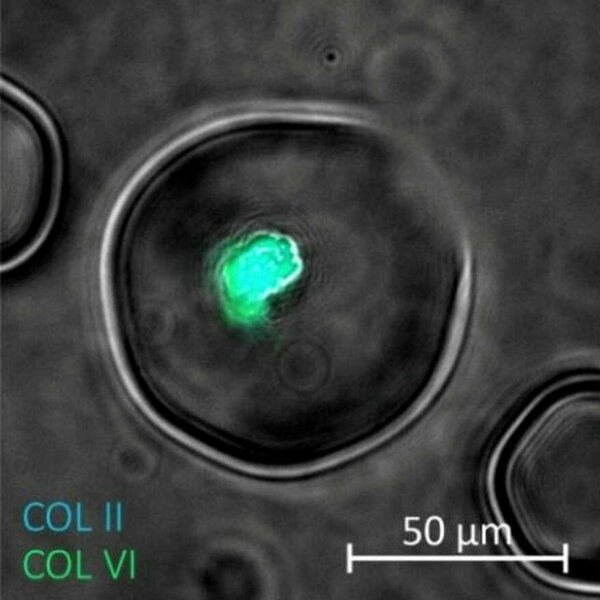
Attempts at repairing cartilage defects are often unsuccessful due to the formation of fibrocartilage instead of articular cartilage. This formation is caused by chondrocytes attaining a contractile phenotype, which in turn is a consequence of a changed response to mechanotransduction forthcoming from the lack of a pericellular matrix (PCM) around the chondrocytes, together called a chondron. The PCM is a layer found around chondrocytes protecting them from excessive mechanical loads. Therefore, in order to promote articular cartilage formation, the presence of a protective layer around chondrocytes is crucial. In this study, chondrons were created by using microfluidics to create microdroplets, acting as artificial PCMs for the chondrocytes. Agarose and GelMA were explored as materials for culturing chondrocytes on a single-cell level in these microdroplets, yielding highly controllable microenvironments around the cells. The behavior of the encapsulated chondrocytes was monitored using flow cytometry – showing a change in collagen production over the weeks - and fluorescence microscopy, visualizing the structural changes in production. Increased levels of collagen types II and VI, and with this, a decrease in collagen type I, were observed. Moreover, collagen type VI was shown to form PCM-like structures in the droplets. These results are indicative of the potential ‘artificial PCMs’ have for chondrocyte culturing.